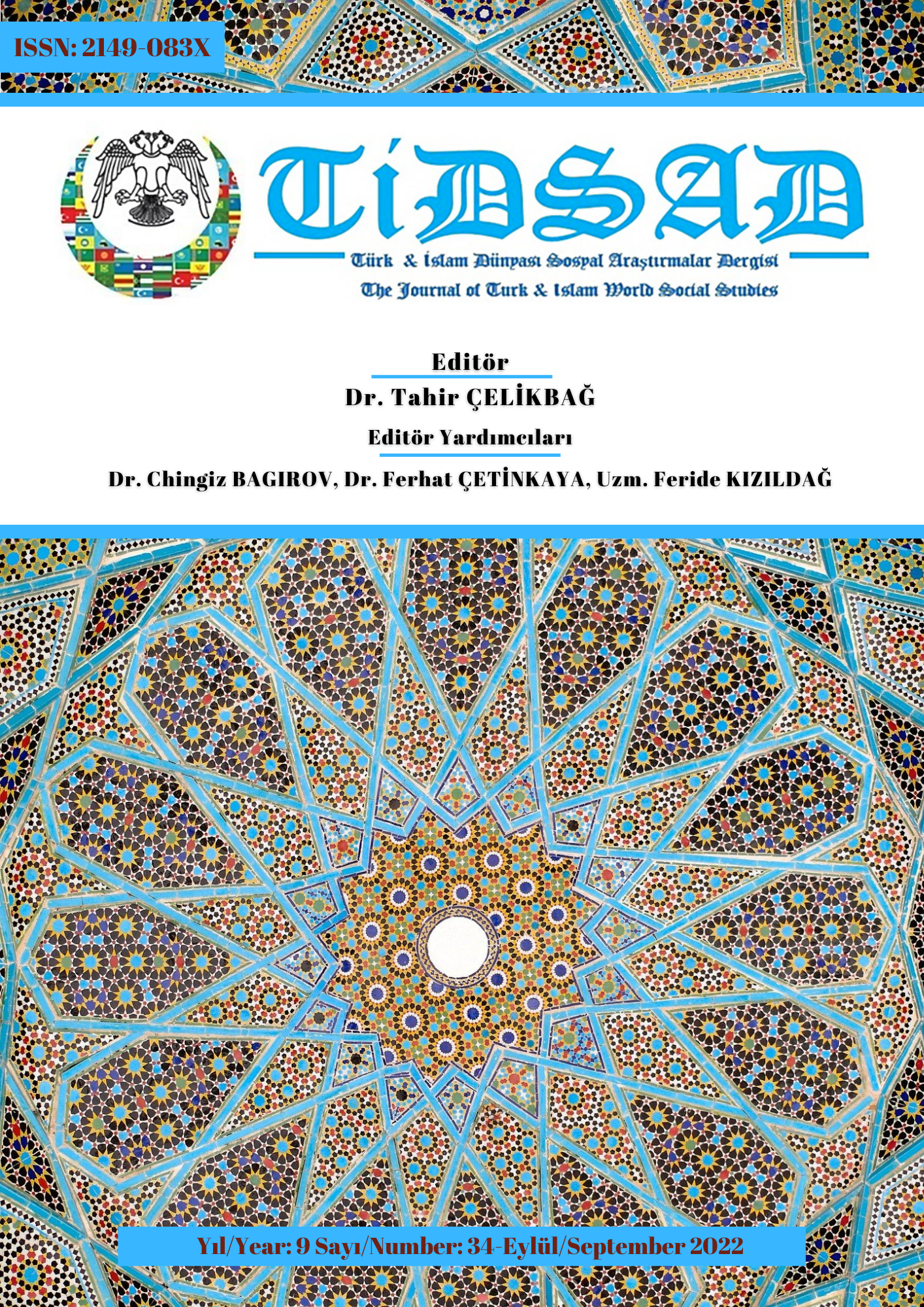Author :
Abstract
- Dünya Savaşı sonrası refah devleti oluşturmak adına benimsenen modernizm savaştan beş yıl sonra tüm dünyada ekonomik değişimin yanı sıra mimarlıkta da, tam anlamıyla uygulanmıştır denilemez. Ancak, içinde bulunulan endüstri çağına ve teknolojik gelişmelere uygun yepyeni bir mimarlık anlayışı benimsenmeye başlanır. Bu anlayışta, tarihi üsluplardan kaynaklanmayan ve bunlardan etkilenmeyen bir mimari akımdır. Savaştan sonra tahrip olan şehirleri yeniden inşa etmek için ortaya “Late Modern” olarak da adlandırılan Brütalizm akımı ortaya çıkmıştır. Brütalizm, yapı malzemesi olarak temelde beton kullanılmıştır. 1950’lerde Avrupa’da ortaya çıkan, sonrasında çelik ve cam gibi malzemelerinde katıldığı kendini geliştiren bir yaklaşım sergilenmiştir. Türkiye'deki mimari ortamda da brütalizm kabul görmüştür. Ancak, Avrupa’da 1950’lerde ortaya çıkmış olup, Türkiye’de 1960 ve sonrasında görülmeye başlanmıştır. Atatürk Kültür Merkezi hem 1950'lerin hem de Brütalist akımın en önemli simgelerinden birisidir. Dönüşümleri ve yapım aşamalarıyla her daim tartışmaların odak noktasında yer alan Atatürk Kültür Merkezi farklı açılardan değerlendirildiğinde, hem brütalist akım çerçevesinde, hem de iki defa yapıldıkları dönem içerisinde, iktidarların isteği doğrultusunda, kent hafızası ve uluslararası üslup olan brütalizmin arasında bir köprü görevi görmektedir.
Keywords
Abstract
Modernism, which was adopted to create a welfare state after World War II, cannot be said to have been fully implemented in architecture as well as economic change all over the world five years after the war. In this understanding, it is an architectural movement that does not originate from and is not affected by historical styles. Brutalism, also known as "Late Modern", emerged to rebuild cities that were destroyed after the war. Brutalism basically used concrete as a building material. A self-developing approach, which emerged in Europe in the 1950s and later joined in materials such as steel and glass, was exhibited. Brutalism was also accepted in the architectural environment in Turkey. However, it emerged in Europe in the 1950s and started to be seen in Turkey in the 1960s and later. Atatürk Cultural Centre is one of the most important symbols of both the 1950s and the Brutalist movement. Atatürk Cultural Centre, which has always been at the focal point of discussions with its transformations and construction stages, serves as a bridge between urban memory and international style brutalism, both within the framework of the brutalist movement and in line with the wishes of the governments, when evaluated from different perspectives.
Keywords
- Akın, G. (2004). Brütalizm, Bir Modernist Üslup, Betonart Dergisi, 8.
- Akpınar İ.Y. ve Ayataç, H. (2012). Kamusallığını yitiren bir meydan: Taksim. Güney Mimarlık, 10, 40-43.
- Alp, S. (2019). Brütalist mimari ve heykel ilişkisi: David Umemoto’nun heykelleri. Dumlupınar Üniversitesi, Sosyal Bilimler Dergisi, Özel Sayı, 1-16.
- Art Sanat (2016). Betonun yarattığı akım: Brütalizm. Hazır Beton, Kasım-Aralık, 83-86.
- Batur, A. (1984). Cumhuriyet döneminde Türk mimarlığı. Cumhuriyet Dönemi Türkiye Ansiklopedisi, 5, 1380-1397.
- Bozdoğan, S., Akcan, E. (2012). Modern architectures in history: Turkey (1. Edition). Reaktion Books.
- Can, A. (2014). Modern icrası: Atatürk kültür merkezi 1946-1977. Online avaible.
- Engin, D. (2021). In between remembering and forgetting: A critical reading of Ataturk cultural center as a place of memory [Master’s thesis]. Izmir Economics University.
- Erdemir, Z. (2016). Loft kavramına farklı bir bakış açısı: “Brütalizm” [Yayımlanmamış yüksek lisans tezi]. İstanbul Kültür Üniversitesi, Fen Bilimleri Enstitüsü.
- Erkol, İ.(2009). Utarit İzgi ve Türkiye’de modern mimarlık [Yayımlanmamış yüksek lisans tezi]. İstanbul Teknik Üniversitesi, Fen Bilimleri Enstitüsü.
- Ganiç, K. (2016). Kentsel yapıtlar üzerinden bir mekânsal bellek okuması: Atatürk kültür merkezi (AKM) [Yayımlanmamış yüksek lisans tezi]. İstanbul Teknik Üniversitesi, Fen Bilimleri Enstitüsü.
- Genim, S.(2013). İstanbul Kültür Sarayı’ndan Atatürk Kültür Merkezi’ne. Sinangenim.com.
- Hasol, D. (2020). 20. Yüzyıl türkiye mimarlığı (3.Baskı). Yem Yayınları.
- Kırdar, L. (1947). Yenileşen İstanbul (1.Baskı). İstanbul Belediye Matbaası.
- Kömürcüoğlu, M. (2011). Le Corbusier’i bilir misiniz? İnsan ve Toplum, 127-132.
- Kuban, D. (2016). Betonarme ve modern mimari, Doğan Kuban yazıları antolojisi, C.1, 187- 203.
- Küçükdoğan (2008).Yaşayan mekânlar. Atatürk Kültür Merkezi, Belgesel
- Passanti, F. (2005). Vernaküler, modernizm ve Le Corbusier (Çev: Gökbayrak,P.). Betonart, 7, 45-55.
- Salgın, B. (2007). Brüt beton, brütalizm ve Türkiye örnekleri [Yayımlanmamış yüksek lisans tezi]. Erciyes Üniversitesi, Fen Bilimleri Enstitüsü.
- Sözen, M.(1984). Cumhuriyet dönemi Türk mimarlığı (1923-1983). Türkiye İş Bankası Yayınları.
- Tabanlıoğlu, H. (1979). Atatürk Kültür Merkezi. TC Bayındırlık Bakanlığı Yapı İşleri Müdürlüğü.
- Tanyeli, U. (2020). İç sıkıcı bir AKM öyküsü veya kutu içinde bir paskalya yumurtası. Arredamento Mimarlık,11-12.
- Yücel, A. (2018). Mimarlıkta brütalizm ve brütalizmler: Bir perspektif panorama. Arredamento Mimarlık, 318, 65-83.





